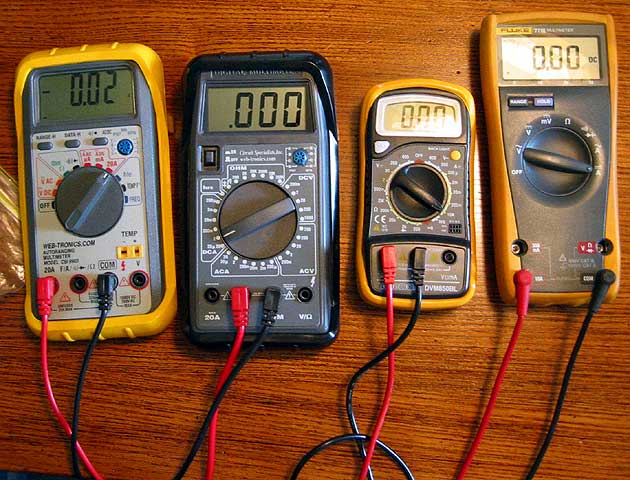milkyspit
Flashlight Enthusiast
After living with and testing various versions of the Milky Candle for a while now, I got the crazy notion one day that I'd like to have a little tester to check the 123 cells coming OUT of a no-longer-running Milky Candle. The MC runs on 2x123 cells so it has the capability to deplete those cells more deeply than would be possible with a 1x123 setup, but with 2x123 cells, very often it's one of the cells that's become fully drained and stops the MC from running, while the other one could still be used for a while more. My crazy little concoction, the Milky Tester, now lets me check those cells in seconds to make this determination.
Some views of my cobbled-together Milky Tester...
Diagonally, showing most of the important stuff. /ubbthreads/images/graemlins/wink.gif
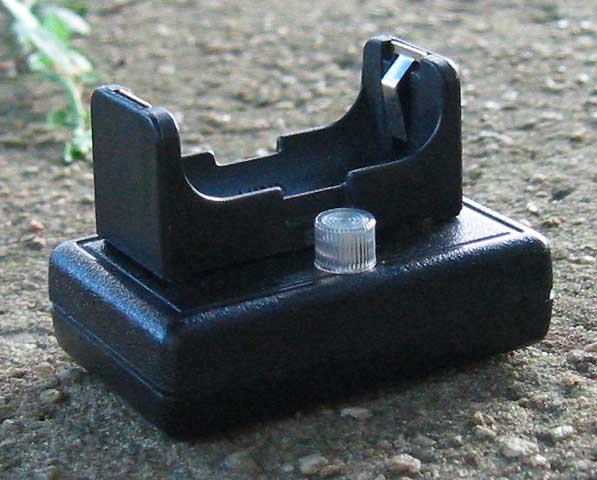
View from the top.
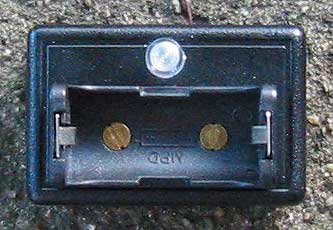
Using the tester is simple. Just plop a 123 cell into the holder, and see if the amber LED lights up. If it does, the cell will most likely power the Milky Candle just fine; if not, feel free to discard the cell without guilt about wasted electrons. /ubbthreads/images/graemlins/grinser2.gif
Milky Tester with a good cell.
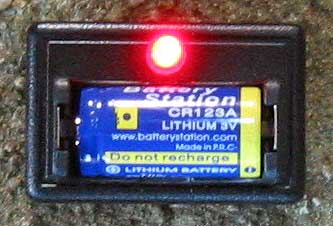
Bad cell... he's dead, Jim! /ubbthreads/images/graemlins/wink.gif
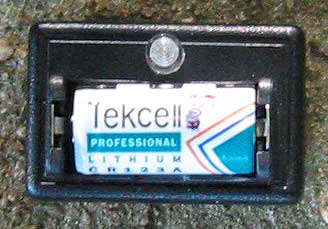
So far I've found that this little tester is remarkably accurate as far as checking for suitability of cells for use in the 2x123 Milky Candle. Of course, it's specifically tuned for that usage, so a cell testing as good may not necessarily work in your other lights. But hey, all I wanted was a tester for my Milky Candle cells!
So what's inside this engineering marvel? Well... not much, really. /ubbthreads/images/graemlins/icon15.gif The concept involves putting an amber LED in parallel (NOT series!) with a specific amount of resistance. For the resistance, I chose three 390 ohm resistors in series (in other words, 1170 ohms in total). The amber LED has a Vf of roughly 2V, perhaps just a bit less. With the resistors in parallel, the same voltage drop must occur across them as well, and by Ohm's Law that guarantees a certain minimum current flow through the circuit... in this case, something along the lines of 1.7mA. If my math is wrong please forgive me, but rest assured that the gadget works, even if it does so for the wrong reason. Which in my case is very possible! /ubbthreads/images/graemlins/ohgeez.gif
Guts of the Milky Tester!
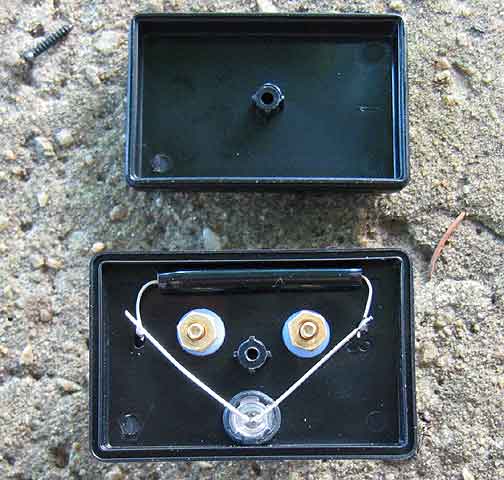
Some caveats are in order here. This is most definitely NOT a particularly elegant circuit, nor is it the best way to handle such a tester. I just put it all together in a boring moment with scrap parts on hand, and it seems to do the job... good enough for me! /ubbthreads/images/graemlins/smile.gif Also note that it's NOT suitable to run on its own as some sort of little "candle" or area light, mainly because the LED has no resistance whatsoever in series with it, meaning a fresh 123 cell would send ridiculous amounts of current through it and cook it pretty quickly. That also means the cell should only be tested for a moment, then REMOVED FROM THE HOLDER, lest it cause overheating problems. There are ways around these problems, but at the moment I'm happy that the little tester is doing its job.
For those wondering, the battery holder is available from Digikey, as are the little diffuser caps (hmm... or was it Jameco for the diffuser caps?). The teensy tiny project box is from Radio Shack, and the amber LED was purchased many months ago from Craig of The_LED_Museum. Thanks Craig! /ubbthreads/images/graemlins/bowdown.gif
Well, hope this helps someone... if it helps perhaps three other people, I'll be glad to have spent the time doing the writeup! Thanks for reading!
/ubbthreads/images/graemlins/thumbsup.gif
Some views of my cobbled-together Milky Tester...
Diagonally, showing most of the important stuff. /ubbthreads/images/graemlins/wink.gif

View from the top.

Using the tester is simple. Just plop a 123 cell into the holder, and see if the amber LED lights up. If it does, the cell will most likely power the Milky Candle just fine; if not, feel free to discard the cell without guilt about wasted electrons. /ubbthreads/images/graemlins/grinser2.gif
Milky Tester with a good cell.

Bad cell... he's dead, Jim! /ubbthreads/images/graemlins/wink.gif

So far I've found that this little tester is remarkably accurate as far as checking for suitability of cells for use in the 2x123 Milky Candle. Of course, it's specifically tuned for that usage, so a cell testing as good may not necessarily work in your other lights. But hey, all I wanted was a tester for my Milky Candle cells!
So what's inside this engineering marvel? Well... not much, really. /ubbthreads/images/graemlins/icon15.gif The concept involves putting an amber LED in parallel (NOT series!) with a specific amount of resistance. For the resistance, I chose three 390 ohm resistors in series (in other words, 1170 ohms in total). The amber LED has a Vf of roughly 2V, perhaps just a bit less. With the resistors in parallel, the same voltage drop must occur across them as well, and by Ohm's Law that guarantees a certain minimum current flow through the circuit... in this case, something along the lines of 1.7mA. If my math is wrong please forgive me, but rest assured that the gadget works, even if it does so for the wrong reason. Which in my case is very possible! /ubbthreads/images/graemlins/ohgeez.gif
Guts of the Milky Tester!

Some caveats are in order here. This is most definitely NOT a particularly elegant circuit, nor is it the best way to handle such a tester. I just put it all together in a boring moment with scrap parts on hand, and it seems to do the job... good enough for me! /ubbthreads/images/graemlins/smile.gif Also note that it's NOT suitable to run on its own as some sort of little "candle" or area light, mainly because the LED has no resistance whatsoever in series with it, meaning a fresh 123 cell would send ridiculous amounts of current through it and cook it pretty quickly. That also means the cell should only be tested for a moment, then REMOVED FROM THE HOLDER, lest it cause overheating problems. There are ways around these problems, but at the moment I'm happy that the little tester is doing its job.
For those wondering, the battery holder is available from Digikey, as are the little diffuser caps (hmm... or was it Jameco for the diffuser caps?). The teensy tiny project box is from Radio Shack, and the amber LED was purchased many months ago from Craig of The_LED_Museum. Thanks Craig! /ubbthreads/images/graemlins/bowdown.gif
Well, hope this helps someone... if it helps perhaps three other people, I'll be glad to have spent the time doing the writeup! Thanks for reading!
/ubbthreads/images/graemlins/thumbsup.gif


